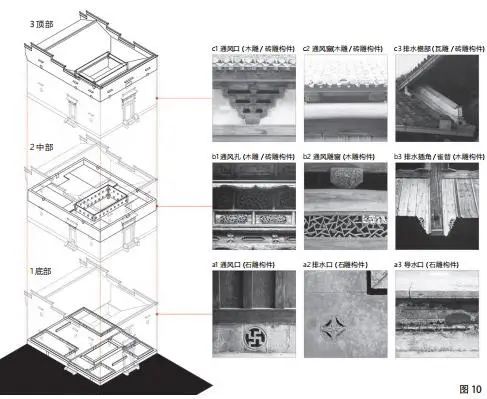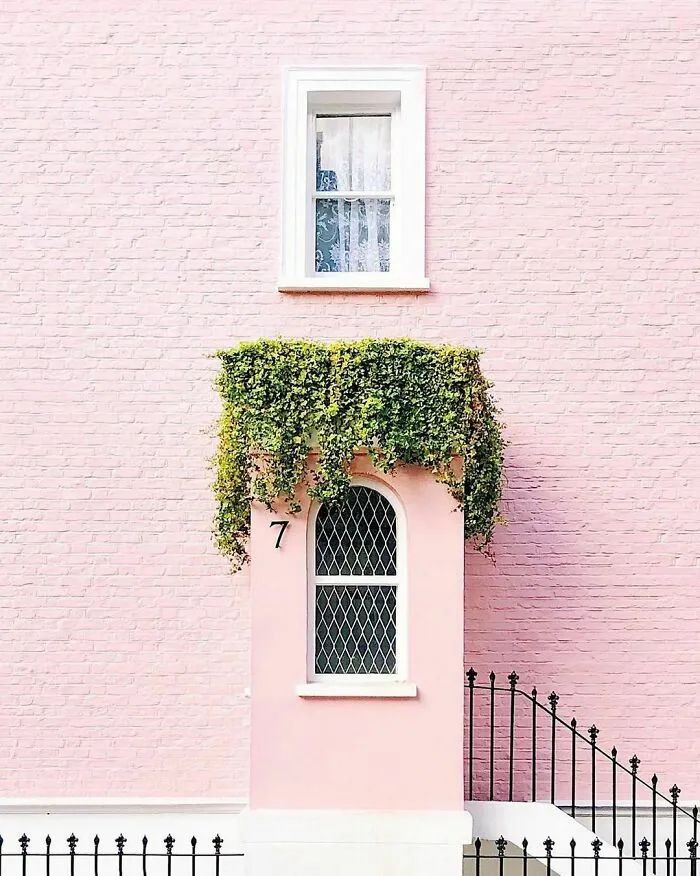When it returns to the context of architecture noumenon, it involves a core issue, that is, how decoration, as an element of construction, participates in the “construction” of architecture.
Such problems are not uncommon in residential decoration.
Most of the carvings on the ridge are small brick carvings, and the whole stone carving technique is used locally.

In fact, decoration creates a very tension form to connect space and express order through construction [1].
The three sculptures constitute the backbone of Huizhou architectural decoration.
Since the Ming and Qing Dynasties, folk artists have been good at using local materials such as brick, stone and wood.
1 spatial decoration with reversed internal and external differences in Qiankou fangwentai residence Fig.
The uniform pattern assembled in the courtyard wall window leakage plays a spatial guiding role in internal and external separation and line of sight communication.
This folk saying confirms from one side the fact that decoration is common in Huizhou vernacular architecture and its craftsmanship.

If it is located in local architecture, it can be generally considered that diagonal braces, Dougong and other components belong to the former, while lintels, partition leaves and other surface decoration belong to the latter.
Among them, roof tile carvings can be attributed to brick carvings in terms of technology, and because they are small in size and evenly distributed in houses, in modern times, they are usually pressed and calcined by molds and formed as a whole.
They are characterized by small-scale, refined and thick colors, closely follow the use position of brick and tile materials in the building envelope, and show the flexibility and subtlety of local layered construction and house detail control.

It appears in various door covers, wall eaves, window frames, roof ridges, etc., and plays a role in depicting the image of the entrance and delineating the details of the lintel, window edge, corner and roof ridge.
Stone carvings are mainly related to the stone parts of the building in terms of spatial location, mostly concentrated in the middle and lower sections of the building, covering the three levels of ancillary components, doors and windows and abutment in the construction system.
In addition, brick carvings are often used at the structural joints of exterior walls of houses, such as wall boundary conversion, eaves hooking, interface corners, etc.
Therefore, if we discuss decoration construction from the perspective of traditional binary opposition, it will increasingly lead to the tendency of separation between decoration and the building itself, ignoring that decoration is not only related to structure, but also connected with form, space, performance and order expression in the whole building construction system.
It does define the relationship between decoration and the so-called “building noumenon”, but it also brings some disputes.
The contrast between the use of materials and the complexity and simplicity of decoration inside and outside the vernacular buildings follows the spatial organization, construction rules and even environmental requirements.
Their application in houses follows the construction logic and presents a hierarchical expression order.
This dichotomy is widely adopted by the academic community because it is easy to distinguish and understand.
2 hierarchical expression of materials “no house, no carvings” is a common feature of Huizhou dwellings [4].
Tile carvings are most frequently used at the main ridge, ridge building and hook head, and usually appear in animal and plant images symbolizing blessing.
Due to the limitation of brick material and size, large-area brick carvings often adopt splicing and combination, while small-scale brick carvings mainly use point carving.
It is not only the decorative base of the peripheral protective structure, but also penetrates into the interior of the house, connecting brick carving and wood carving to a certain extent, bridging the difference between hard and soft materials.
All kinds of doors and windows openings opened with the outer wall are magnificent exhibition areas of exquisite carving art, which are shown in relief with figures, allusions and other themes.
In the construction of space, brick carvings are mainly based on three levels: roof ridge, wall eaves and doors and windows (Fig.
Introduction: the “construction” vision of decoration in the past architectural vision, decoration often drifted away from the main discourse of space and construction, but was included in the fields of Arts and crafts or interior design, and its discussion also focused on the level of engineering skills and symbolic significance.
2.2 stone carvings in the construction of residential space, stone carvings can be said to be the intermediary connecting the three carvings.
It is laid out in a multi-dimensional scene, forming the spatial landscape structure in the place, and strengthening the multi-dimensional construction relationship between the decoration system itself and the aspects of material sequence, component expression and space ideographic expression (Fig.
For example, it is difficult to see whether the ground pavement is structural or not, because it is more involved in the construction of spatial landscape; Another example is that the prototype of the diagonal brace, a construction element, is just a simple diagonal member, and as a decorative diagonal brace, it is not its decorative part that plays a mechanical role.
In order to understand the relationship between decoration and construction, Kenneth Frampton proposed the concepts of “noumenon decoration” and “reappearance decoration”, and then developed into the type expression of “structural decoration” and “non structural decoration (additional decoration)” [2].
2).

The former focuses on the three-dimensional decoration that plays a structural role, while the latter prefers to describe the two-dimensional decoration in the surface layer, that is, the decoration that “has independent aesthetic factors, can be separated from the building body to a certain extent, and contains pure decorative factors” [3].

2.1 brick carvings brick carvings are not the largest number of local buildings in Huizhou, but they are the most widely distributed decorative crafts.
Fig.
Relying on the prosperous Huizhou merchants’ economy, they have created a unique art of “Three Sculptures in Huizhou”, also known as “three wonders of Huizhou” [5].

The weaving and carving of tiles and bricks on the top of the horse head wall vividly outline the edge closing form of the building interface through the image splicing of flower tubes and grain heads.
Fig.
1).
2 brick carving decoration level wall eaves are the focus of material lamination.
The large-scale decorative components and attached landscape decorations of the residential buildings from the outside to the inside are basically borne by stone carvings..
Especially in the early Huizhou residential construction and craftsmanship system, there was no strict separation between decoration technology and construction skills, which determined the construction attributes of decoration to a considerable extent.
Huizhou vernacular architecture, a typical branch of Chinese vernacular architecture, has developed for thousands of years and formed stable and highly recognizable type characteristics.
This division is based on “structure or not” in a simple and clear way.




